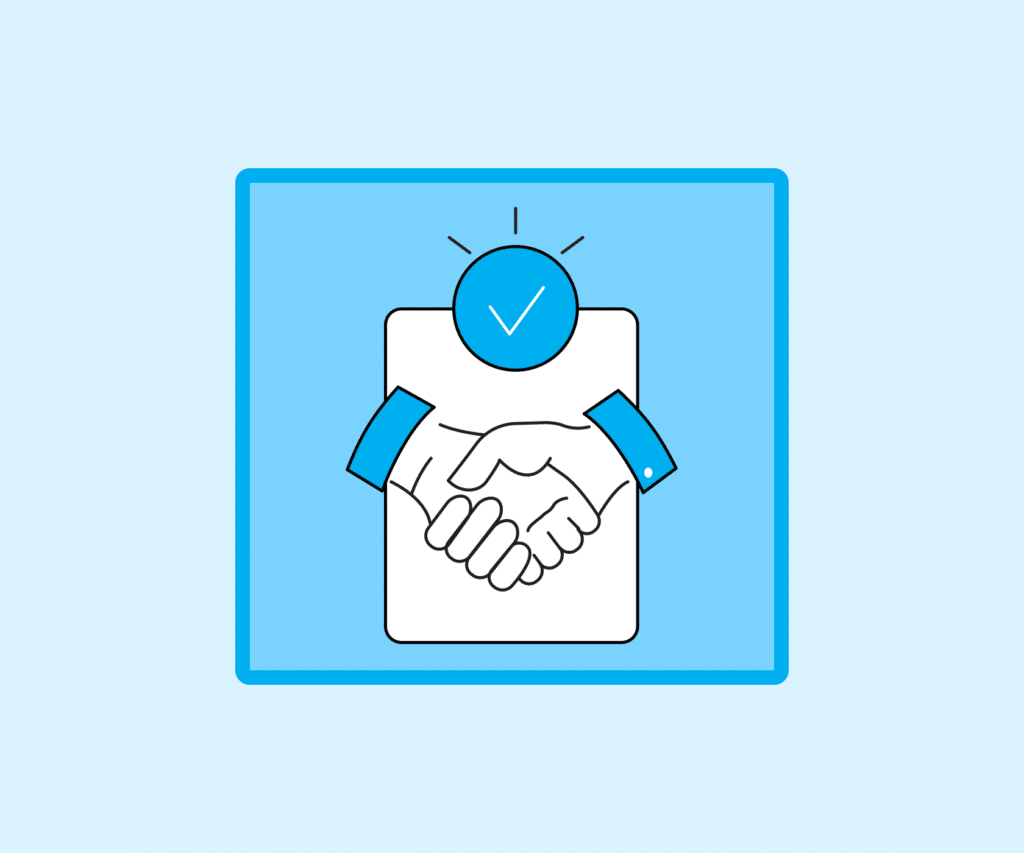Why Employee Onboarding Is Important: 4 Eye-Opening Trends in 2025
Discover how improving the employee onboarding experience gives your company a competitive edge in the future of business.

The future calls for strategic employee onboarding programs
We’ve all experienced the exciting yet nerve-wracking feeling of starting a new job. In many ways, it can feel a lot like stepping into a new country. Everything is unfamiliar to you. The language and the rules are foreign, and even basic tasks can feel challenging when you don’t know where to find what you need.
But imagine the difference of having a tour guide—someone who gives you direction, shows you the ropes, and helps you feel settled. Companies can provide that kind of support for new hires with a well-designed employee onboarding program.
An effective employee onboarding process equips new hires with the skills, knowledge, and resources they need to succeed in their role and function within a company. In general, successful onboarding:
- Sets the tone for the rest of an employee’s professional journey and relationship with your company.
- Makes new hires feel welcomed, valued, supported, and connected—boosting job satisfaction and minimizing turnover within the first 120 days of employment.
- Accelerates time-to-productivity, preparing new employees to contribute meaningfully to the company’s work and goals faster.
Clearly, employee onboarding has always been an essential component of any effective talent hiring and retention strategy. But in the future of business, employee onboarding is expected to continue increasing in importance. In this post, we’ll examine the latest data, highlighting four key trends calling for greater business investment in employee onboarding in 2025 and beyond.
Key Takeaways
Employee onboarding trends to keep an eye on in 2025

1. Experts expect an economic slowdown—so maximize your talent investments
Employee turnover is expected to cost businesses even more in 2025 thanks to steep hiring costs coupled with a projected economic slowdown. Replacing just one employee can cost anywhere from half to twice their annual salary, and losing new hires who haven’t yet delivered a return on training and onboarding investments is a setback most employers can’t afford.
Effective onboarding can help retain these new employees, lower turnover costs, and maximize the value of your talent investments.
How does onboarding impact new employee retention?
According to Bamboo HR studies, 70 percent of new hires decide whether a job is the right fit within the first month. In a Paychex survey of 1,000 workers who had started in the last year, 80 percent of those who felt undertrained from poor onboarding planned to quit soon.
These observations indicate that employees use the onboarding phase to predict future experiences at the company. If your onboarding experience is confusing, frustrating, or overwhelming, employees might assume that the rest of their job tenure will be the same—and want out. Instead, design a positive onboarding experience from day one. Set the right tone by making sure new hires feel welcomed and supported within the company.
Even seemingly small efforts—such as scheduling team meet-and-greets, verbalizing your excitement to have new hires on the team, and establishing clear goals for their first few days or weeks of training—are impactful.
2. Workers are overwhelmed with information and tools—help them cut through the noise with a robust onboarding course
Today’s workers face the daunting task of mastering a dizzying array of tools and technologies—while simultaneously navigating increasing volumes of information.
According to Gartner, Inc. the average knowledge worker uses 11 applications at work, compared to six applications in 2019. Gartner’s survey also found that 47 percent of digital workers struggle to find information or data needed to perform their jobs effectively.
It’s hard enough to learn a new job. But that task can seem impossible when you’re cobbling together information scattered across hundreds of files and a half-dozen platforms. Effective onboarding processes help newer employees overcome these hurdles at a time when they feel most overwhelmed.
A robust online onboarding course—or course series—can act as a single source of truth. New hires can reference this one-stop-shop for company, team, systems, processes, tools, products, and benefits information. You might also add a course resource hub, or follow-up microlearning, containing quick links to additional technology tutorials, cross-departmental directories, process documentation, and more.
Organized, accessible, and well-documented onboarding resources help employees confidently navigate a sea of institutional knowledge, technologies, and training information.
3. A new generation of workers is on the rise—so build their values into the onboarding process
Gen Z is expected to overtake baby boomers in the full-time workforce by the end of this year—and represent nearly a third of the global workforce by 2030. Thus, companies that can appeal to and engage with this up-and-coming generation of workers will gain a competitive advantage in the talent market.
To do that, businesses can start by understanding Gen Z values—and using the onboarding process to speak to those values at the onset. Explore a few examples below.
- Purpose. Even more than other generations, Gen Z employees want to do work that’s meaningful, according to a new Gallup poll. Onboarding offers an opportunity to connect newer employees with their work’s impact immediately. Employers can tap into Gen Z motives by clearly communicating how their roles contribute to the company’s mission directly.
- Learning and development. A lack of career mobility and skills development also made McKinsey’s list of top reasons why both Gen Z and millennial employees quit. Employers might combat these pitfalls by highlighting work mentorship, training, or continued education programs during onboarding to provide clear paths for employee growth from the beginning.
4. Employee wellness and resilience are more important than ever—so make an effort to document benefits effectively
Finally, resilience is crucial to success in today’s workplace. Employees who can maintain their well-being and performance in the long run are better equipped to thrive amid the current atmosphere of uncertainty, complexity, and rapid change.
A study by MetLife found that employees who clearly understand their benefits are 44 percent more likely to be holistically well compared to those who don’t. This implies that employers can foster resilience by effectively communicating wellness benefits during the onboarding process. For instance, an onboarding course might showcase the company’s employee assistance programs, mental health resources, paid time off, complimentary gym memberships, flexible working arrangements, and similar offerings.
Documenting employee benefits enables new hires to find support when they need it. Not only that, but these efforts contribute to fostering a culture of health, supporting and motivating new hires to prioritize their well-being. This, in turn, enhances productivity and protects against the negative impacts of stress and burnout.
Onboarding as a competitive advantage for 2025
Employee onboarding is more than just a formality for businesses to welcome new hires. It’s a strategic imperative for fostering employee engagement, productivity, and retention in 2025 and the future. Take these key considerations to build better onboarding experiences and support employees with effective training from day one.
Ready to dial in your onboarding process? Check out this e-book full of actionable tips to tackle modern onboarding challenges and get new employees engaged and contributing faster than ever
You may also like

What Is Everboarding and Why Your Enablement Team Needs It
Onboarding is just the start. Learn how everboarding helps employees grow continuously, adapt, and thrive throughout their careers.

